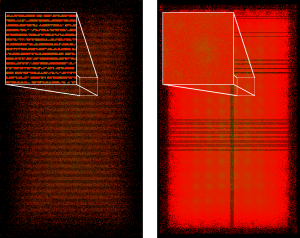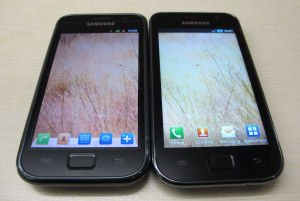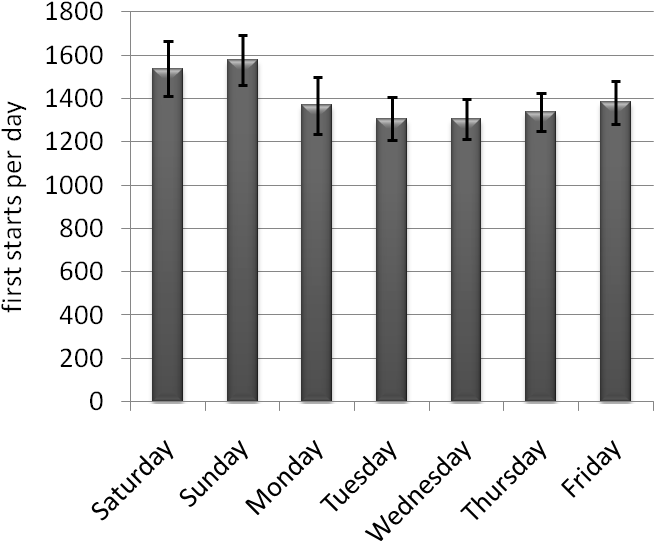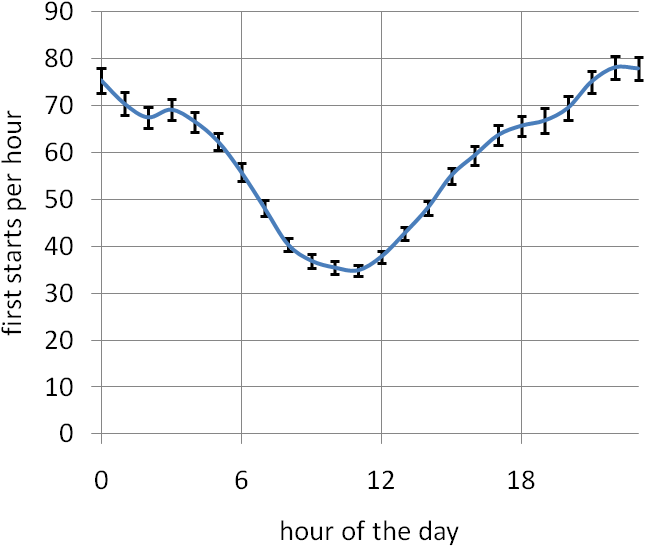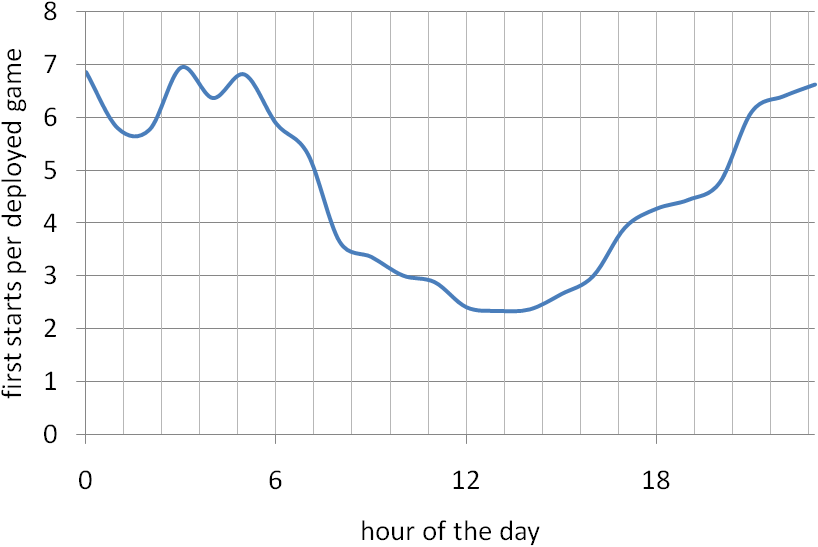If it is a “Samsung GT-i9003 Galaxy SL” the answer might be yes. At least there is something strange about its touchscreen.
Recently I analysed the data we collect using Hit It! one of our Android games that has been installed more than 350,000 times. To play the game users have to tap on circles that randomly appear on the screen. While the game is played we record the user’s behaviour and send it back to our server. In particular, we record the positions that are tapped by the player’s finger. Looking at the hit positions relative to the presented circles we did some pretty nifty things. However, one would expect that the positions that the players tap are somewhat evenly distributed across the screen when combining a serious number of taps.
Interestingly, for the GT-i9003 the distribution looks strange. For the images below we took a random sample consisting of data from 40,000 devices from our data set and extracted the data produced by the GT-i9003 and by the GT-i9000 (a regular Samsung Galaxy S). Data for the GT-i9003 has been produced by 157 devices resulting in 170,205 taps. Data for the GT-i9000 has been produced by 2,321 devices resulting in 3,689,138 taps.
The pixels’ colours show how often a particular pixel has been tapped. Green pixels are tapped often while red pixels are tapped less often. Black pixels are never tapped at all. Due to the nature of the game players have to tap on the screen’s centre more often. For the GT-i9003 we see that half the pixels are NEVER tapped at all. Considering the amount of data and the small difference between the two devices (see below) this obviously can’t be by chance.
The touch-part of the GT-i9003’s touchscreen seems to have only half the resolution of the regular Galaxy S. Furthermore, the hardware or software deals with this limitation in a strange way. The pattern is interesting. There are two rows of pixels that can be tapped followed by two rows that are never tapped. I assume that if the finger taps an “untappable” row the input is mapped to one of the adjacent rows. Considering the somewhat strange pattern and that I can get sub-pixel resolution from the Android API I assume that it is a software problem rather than a hardware issue or probably a combination of hard- and software.
The GT-i9003 is the only device that returns that pattern. If someone owns a GT-i9003 I would be very interested to hear if the effect results in practical issues. But there are also other devices that might have some issues. E.g. there are some Optimus Ones that deserve further investigation (too much variance in the distribution) and I would also like to look at the Kyocera Zio.
